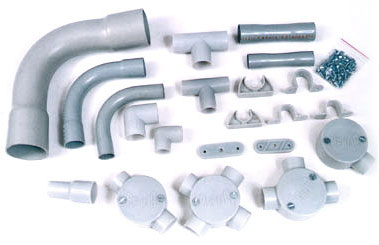This method statement details general electrical installation procedure that is useful for construction of electrical work for houses or any other building projects. Electrical engineer can understand basic requirements and how to arrange the sequence of electrical work.
Project Manager shall be responsible for the implementation of this procedure for electrical work and co-ordinate with the local regulatory bodies for obtaining necessary and essential work permits as applicable if any.
Similarly project engineer will ensure that the all necessary resources i.e. tools, manpower, materials are available to carry out the electrical works as scheduled. They are also responsible to carry out the works as per approved Shop Drawings, Method statements, ITP and risk assessment.
On this page we shall cover below electrical work activities:
- Fixing under floor sleeve
- Fixing conduits in the slabs
- Installing Expansion Coupler in Slabs
- Fixing conduits with GI boxes in the columns
- Fixing conduits with GI boxes in the walls
Before start of work ensure that available machinery & tools are suitable for use, all drawings are approved and necessary clearances are available from main contractor.
Now, I would like to mention a brief explanation for each of the mentioned stages.
Fixing of Sleeves: In the beginning of each project and before casting the retaining wall, we have to make sure that we already fixed our sleeves for high voltage and earthing system cables. Sleeves shall be as per approved drawings and matching the size of cables as per cable schedule.
Fixing of Conduits in the Slabs
In this stage we have to start our works directly after fixing the shatter/form works, since there are a lot of works to be done before fixing the steel, like marking the location for all the lighting, power, and fire alarm points, then fixing the loop in boxes, making the required holes for the dropped conduits for switches, bells, break-glasses and DB’s.
After finishing the steel work completely, we will start fixing our conduits as per the approved shop drawings, off course, we have to avoid passing the conduits in the wet areas, we have to minimize the bends for the conduits, and to be fixed properly with the steel, in addition to using expansion couplers where there are building expansion joints. At the end we will us masking tap to close all the end opening of the conduits.
Expansion Coupler in the slab & Construction Joints
The coupler is to be glued with solvent cement at one end and other end to be left loose with the other conduit left inside it. Make sure for no movement of the conduits after the expansion coupler is installed. Make sure coupler is properly securing to the steel work. Also note that expansion coupler has to be installed near construction joints only.
Fixing Conduits and GI boxes in the columns
Before casting any column in the site, we have to check if there is any requirement for Switch, Socket, bell or break glass on the column. If there is any, we have to fix the GI or PVC box in the proper way so that it will touch with shatter of the column from inside and the conduit will be extended to the top of the column.
Fixing Conduits and GI boxes in the walls
After finishing the block work in each floor, we will start marking the location of all the switches, sockets, telephone outlets, TV outlets, break glass and bells as per the approved shop drawings. Then we will start chasing and chipping the marked locations by using the grinder, accordingly we will fix the GI boxes with minimum 5 mm away from the wall to make sure that the box is flush with the plaster. Next day we will terminate the conduits with the GI boxes.
Discover more from Electrical Engineering 123
Subscribe to get the latest posts sent to your email.

